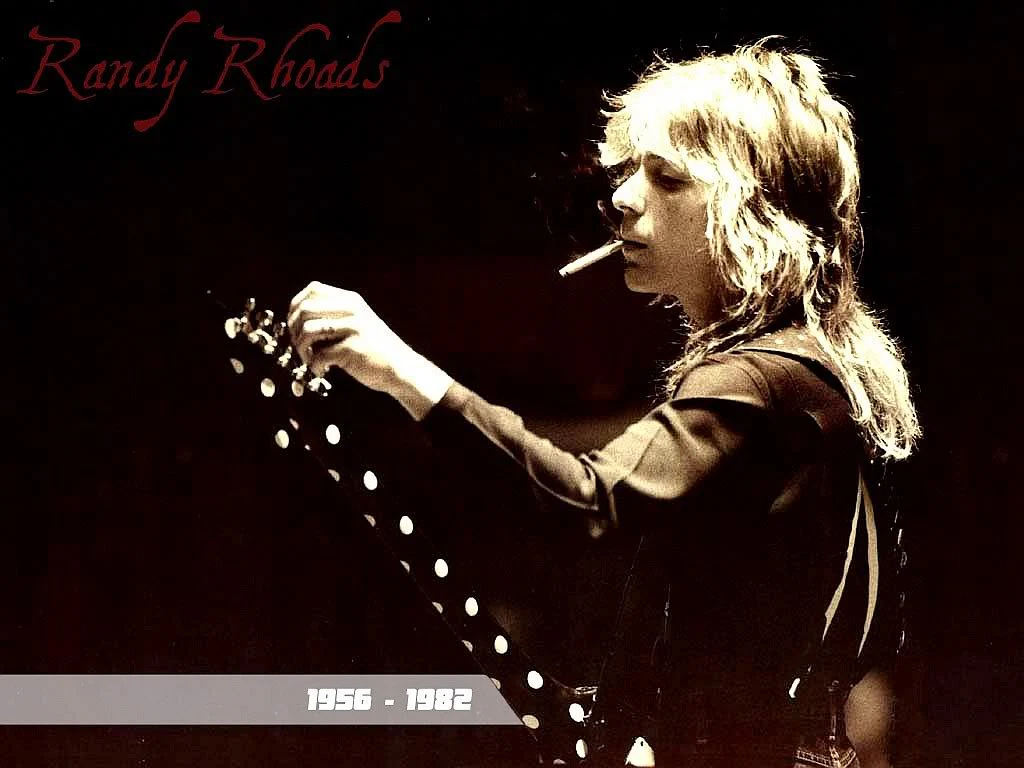
Randy Rhoads: Guitar Innovator Who Changed Rock Forever
When you think of guitar legends, names like Jimi Hendrix, Eric Clapton, and Jimmy Page may come to mind. However, one name that stands out for his incredible virtuosity and innovative techniques is Randy Rhoads. A true pioneer in the rock music scene, Rhoads changed the way electric guitar was approached, and his impact is still felt today. This article dives deep into his life, career, and the lasting legacy he left behind, exploring not just his music but the journey that shaped him into a rock icon.
Early Life and Musical Beginnings
Born on December 6, 1956, in Santa Monica, California, Randy Rhoads grew up in a family steeped in music. His mother was a talented piano teacher, and his older siblings were also musically inclined, which naturally influenced Randy from a young age. Unlike many children who spent their time playing sports or video games, Rhoads dedicated himself to the guitar, picking it up at the tender age of six. His early exposure to music allowed him to develop a deep appreciation for various musical styles, and he spent hours practicing, eager to absorb every note and technique.
By his teenage years, Randy was not just playing in his room; he was already performing in local bands, gathering experience and creating a buzz about his talent. His first serious gig was with a band called "Sparrow," which later morphed into the infamous "Quiet Riot." During these formative years, he began to develop his unique sound, blending classical influences with hard rock, paving the way for his distinctive style. He was not just a guitarist; he was a creator, determined to carve his path in the music scene.
The Rise to Fame: Joining Ozzy Osbourne
The real turning point in Rhoads's career came in 1979 when he joined forces with former Black Sabbath frontman, Ozzy Osbourne. At the time, Osbourne was looking to carve out a solo career after leaving the iconic heavy metal band. Little did they know, this partnership would lead to the creation of some of the most groundbreaking music in rock history.
Randy's first album with Ozzy, "Blizzard of Ozz," was released in 1980 and featured some of the most memorable tracks in rock history. Songs like "Crazy Train," "Mr. Crowley," and "I Don’t Want to Change the World" showcased Randy's incredible guitar work and songwriting abilities. His unique approach to guitar riffs and solos helped to elevate the music to a whole new level, not only showcasing his technical skills but also his ability to write compelling melodies.
Innovative Guitar Techniques
Randy Rhoads wasn’t just another guitar player; he was an innovator. His playing style combined classical music elements with rock, creating powerful melodies and solos that set him apart from his peers. Here are some of the innovative techniques that influenced generations of guitarists:
Classical Influences
One of the most significant aspects of Randy's playing was his incorporation of classical music techniques, which were relatively unheard of in rock during his time. By infusing classical scales and arpeggios into his solos, he created a sound that was both sophisticated and accessible. His famous "Crazy Train" solo, for instance, features a combination of fast-paced runs and melodic phrases inspired by classical music.
Rhoads frequently drew from composers like Bach and Vivaldi, integrating their complex structures into his playing. This level of musicianship wasn’t just impressive; it was groundbreaking. By introducing classical elements into heavy metal, he managed to elevate the genre, encouraging other musicians to think outside the box, thus broadening the musical landscape.
Use of Harmonics
Rhoads was also known for his use of natural harmonics, adding a unique texture to his sound. His ability to seamlessly blend harmonics into his riffs gave his playing an ethereal quality. Tracks like "Dee," an instrumental tribute to his mother, feature haunting harmonics that highlight his sensitivity as a musician. His use of harmonics became a staple in his solos, showcasing a level of creativity that many musicians modeled after. The emotional depth he achieved through this technique touched the hearts of listeners and showcased his songwriting abilities.
Advanced Techniques
From dive bombs to tapping, Randy was a master of various advanced guitar techniques. He often combined these elements in unexpected ways, pushing the boundaries of what was possible on the instrument. His infamous use of the whammy bar allowed him to create sounds that mimicked other instruments, further showcasing his creativity. The opening of "Crazy Train" features a series of pitch bends that create an iconic sound, instantly recognizable to any rock fan.
Randy was also one of the early adopters of tapping—a technique that later became a cornerstone for many guitarists in the heavy metal genre. His innovation in tapping techniques demonstrated his willingness to explore and experiment, encouraging young guitarists to break free from traditional patterns and explore new sounds.
Songwriting Mastery
While Randy Rhoads is best known for his guitar prowess, he was also an exceptional songwriter. His collaborations with Ozzy Osbourne resulted in some of the most memorable tracks in rock history. Randy's ability to blend intricate guitar parts with compelling lyrics made each song a masterpiece. His work on "Blizzard of Ozz" and "Diary of a Madman" showcased how effectively he could create music that resonated with fans, drawing them in with powerful melodies and significant themes.
Signature Guitar and Gear
Randy's sound was also heavily influenced by his choice of gear. He played a variety of guitars throughout his career, but his most iconic instrument was the Gibson Les Paul. The combination of his Les Paul and Marshall amplifiers helped to create that powerful, crunchy tone that fans fell in love with. His affinity for the Les Paul helped establish the model as a lead guitar staple in rock music, influencing subsequent generations of guitarists.
In addition to his beloved Les Pauls, Randy also played custom guitars. His collaboration with Jackson Guitars led to the creation of his signature Randy Rhoads model, a guitar that remains popular among musicians today. This guitar, with its sharp edges and unique shape, not only mirrored his playing style but also reflected his bold personality. The combination of his gear choices and playing style contributed significantly to his distinctive sound, further solidifying his place in rock history.
Cultural Impact on Rock Music
Randy Rhoads's influence on rock music cannot be understated. He not only set a new standard for guitar playing but also inspired countless musicians to push their creative boundaries. Many of today's guitar legends cite Rhoads as a significant influence in their careers. Artists like Zakk Wylde, Dimebag Darrell, and even modern icons like Avenged Sevenfold’s Synyster Gates have all recognized the impact Randy had on their playing styles.
Beyond his technical prowess, Randy was also a master of songwriting. His ability to craft memorable riffs and emotional ballads was a game changer in the world of rock. His work with Ozzy Osbourne paved the way for future rock collaborations, demonstrating that a powerful guitar presence could elevate a vocalist's performance to new heights. Tracks such as "Goodbye to Romance" showcase his skills not only as a guitarist but also as a composer, blending rich melodies with heartfelt lyrics.
The Tragic End
Sadly, Randy's burgeoning career was cut short when he died in a plane crash on March 19, 1982, at the age of 25. The loss was devastating not only for his family and friends but for the music community as a whole. Rhoads was on the cusp of becoming one of the greatest guitarists of all time, and his untimely death left a void that has yet to be filled.
Despite his short career, Randy Rhoads's influence is still celebrated today. Tribute concerts, documentaries, and countless covers of his songs continue to pay homage to his legacy. Fans and fellow musicians alike remember him not just for his technical skills but for the passion and creativity he injected into every performance. The music industry mourned his loss, acknowledging the significant impact he made in such a brief time.
The Legacy Lives On
Even decades after his passing, Randy Rhoads's impact continues to shape the landscape of rock music. Guitarists still strive to emulate his unique sound and innovative techniques, ensuring that his legacy will never fade. Whether through the artistry of modern musicians or the revival of classic recordings, Rhoads remains a towering figure in the world of rock.
As guitar technology continues to evolve, one can only imagine how Randy would have adapted and thrived in today's music industry. His innovative spirit, combined with his relentless pursuit of excellence, would surely have propelled him to even greater heights. Events like the annual "Randy Rhoads Tribute" concert are fantastic reminders of how deeply his influence resonates and how his music continues to inspire.
Influence on Future Generations
The legacy of Randy Rhoads goes beyond just his music; it extends into the ethos of countless musicians who strive to create and innovate. Many guitarists who grew up listening to Rhoads's albums have gone on to develop their styles, all while paying tribute to the master. Guitar schools often use Randy's techniques as a foundation for teaching students, ensuring that his contributions to music are passed down through the generations.
His tragic story, marked by an extraordinary talent cut short, continues to inspire many behind the scenes. The narrative of "what could have been" adds a layer of poignancy to his music, urging new artists to seize the moment and fully explore their creative potential.
Final Thoughts
In conclusion, Randy Rhoads was not just a guitarist; he was a visionary who changed the course of rock music forever. His innovative guitar techniques and songwriting prowess set him apart from his contemporaries, leaving an indelible mark on the genre. As we celebrate his life and contributions, let us remember the passion, creativity, and artistic integrity that defined him as a musician.
So, the next time you hear "Crazy Train" or any of Rhoads's other classic tracks, take a moment to appreciate the genius behind the guitar. The world may have lost Randy Rhoads too soon, but his music and legacy live on, inspiring new generations of musicians to pick up the guitar and create something extraordinary.
Randy Rhoads is the embodiment of a rock legend whose influence will never die. His innovative techniques and passionate performances have etched his name into the annals of rock history, and as long as guitars are played, his legacy will be honored and celebrated. He didn’t just play the guitar; he transformed it into an instrument of artistic expression, and for that, he will always be remembered.













